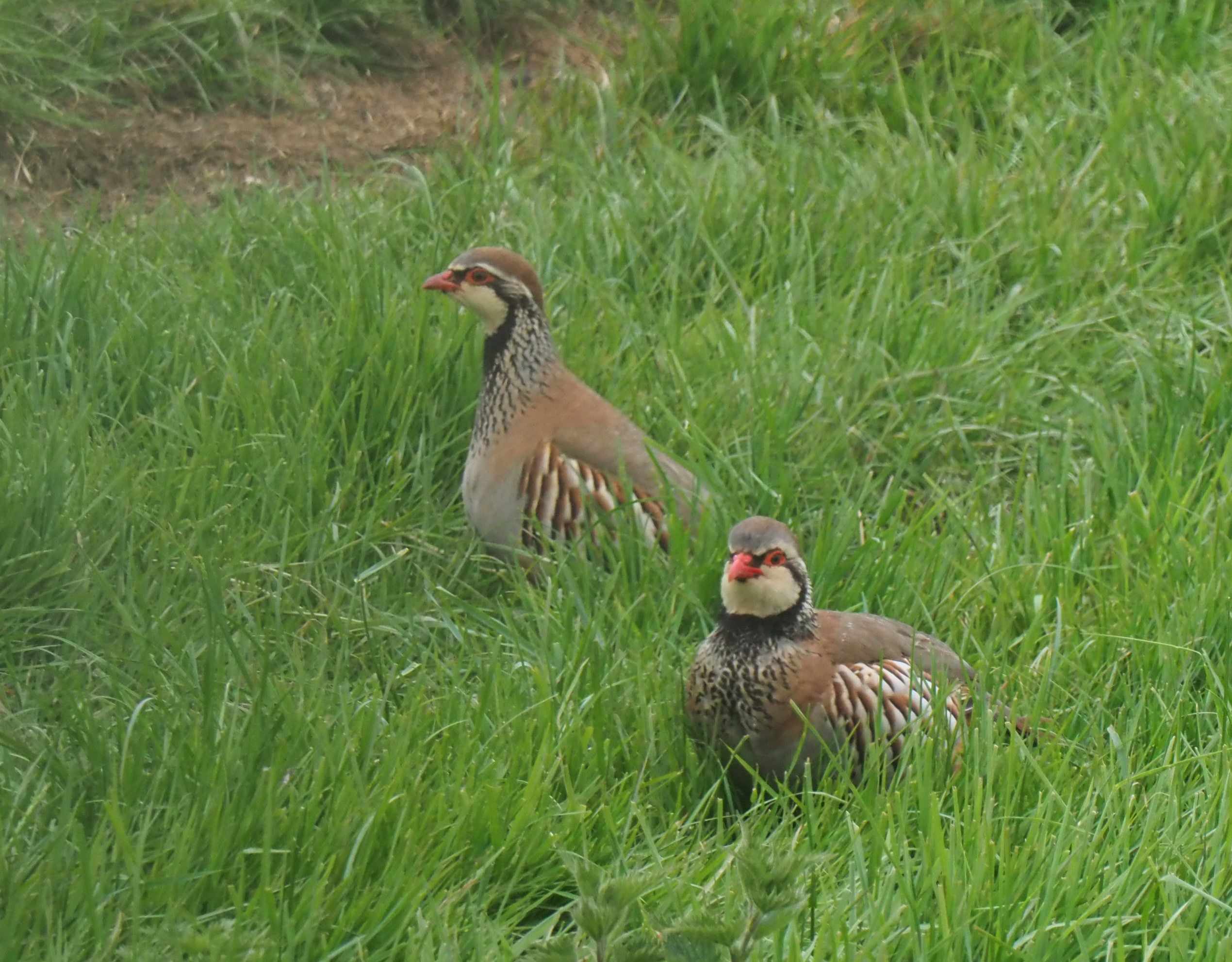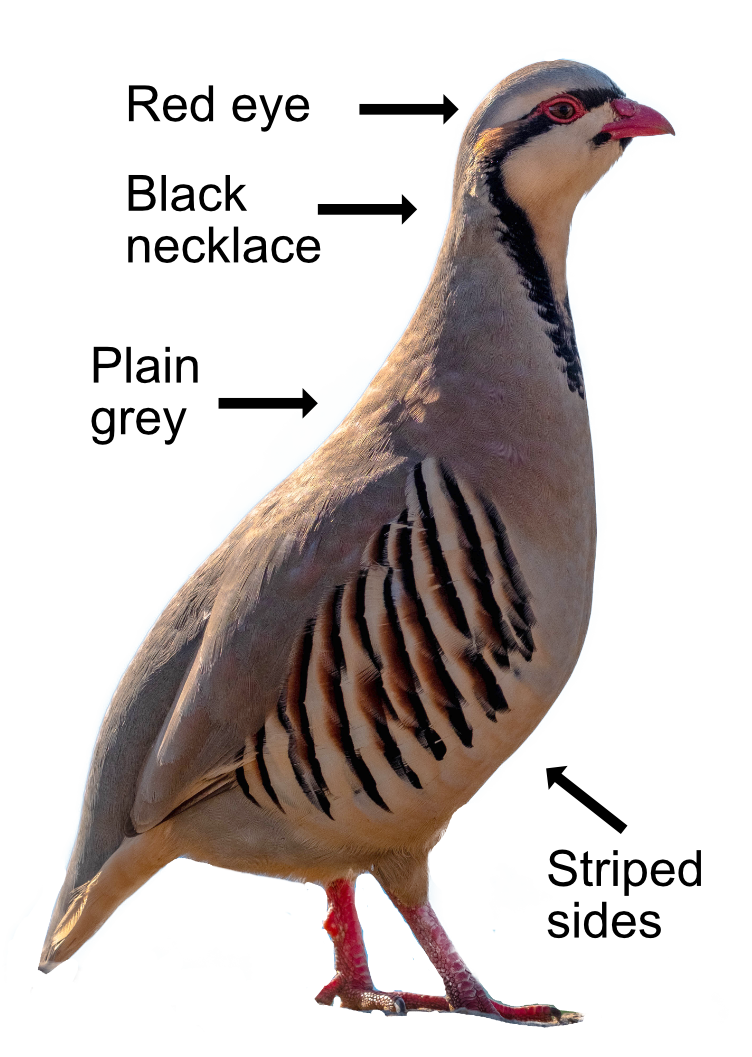
The Red-legged Partridge is a non-native game bird which was introduced a few hundred years ago in 1673 for posh people to shoot. They like large open fields and generally hang around in groups called convoys (or Partridge patrols). They prefer to scuttle away than fly, which is hilarious to watch.
The Red-legged Partridge lives up to its name with lots of bold colours that make it easy to see down the barrel of a shotgun. They have plain, grey-brown upperparts and boldly striped brown, black and white sides, a black and white face pattern with a white chin and black throat necklace. The eye, legs and bill are bright red. Their usual call is a repetitive "chuck-chucker" that sounds like a cat being sick.

They fly with a quick whirr of their wings followed by a long glide, holding them curved down. When flying, they often issue an alarm call that sounds a bit like, "Please shoot!", which is rather stupid. Red-legged Partridge feed on seeds, leaves and insects that they find on the ground.
The male Red-legged Partridge makes several nests in late April to attract a female. They are a bit rubbish, being shallow scrapes in the ground lined with vegetation, so he is not the greatest of charmers. The fussy female chooses one and then tidies it up to raise a family. She lays between 10 and 20 eggs, which hatch after 23 days. The youngsters can mainly feed themselves soon after hatching. They are able to fly 15 days later and become adult sized after 60 days (this rapid growth is what makes them so attractive to gamekeepers). The female will often lay a second clutch of eggs in one of the other nests, which the male has to incubate at the same time, so she can keep an eye on him. They will stay together as a family for their first winter.
The Red-legged Partridge is resident in Britain, with an estimated 150,000 breeding pairs. This is confused by the large number of birds that are reared and released for shooting, which can be over 6 million! Their Latin name is 'alectoris rufa' where 'alectoris' is from the Ancient Greek 'alektoris' for 'chicken' and 'rufa' is Latin for 'red'. A bright red chicken, easy to shoot.